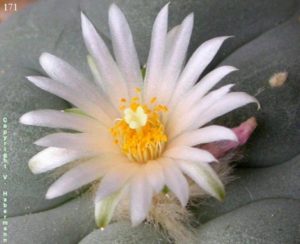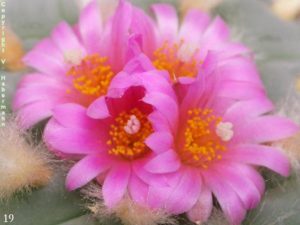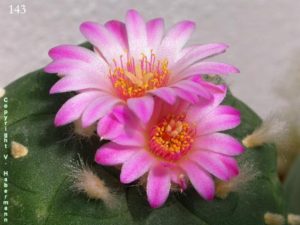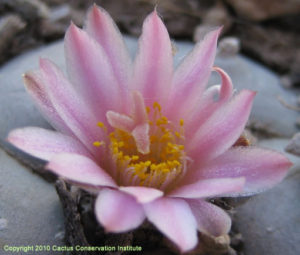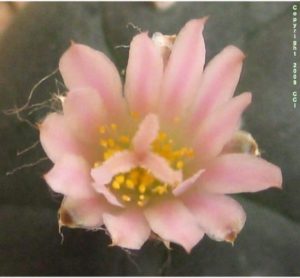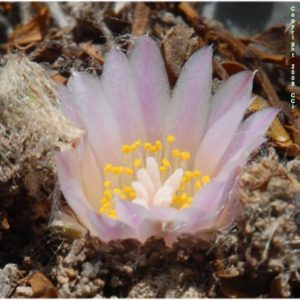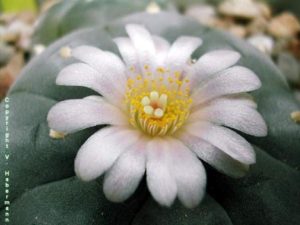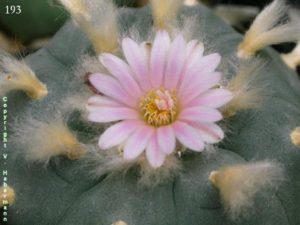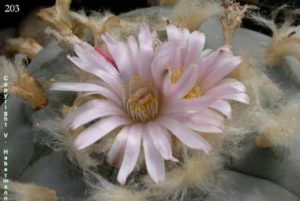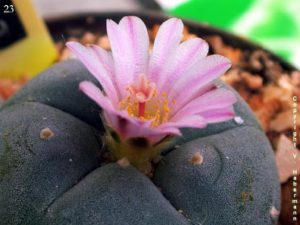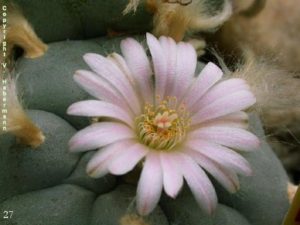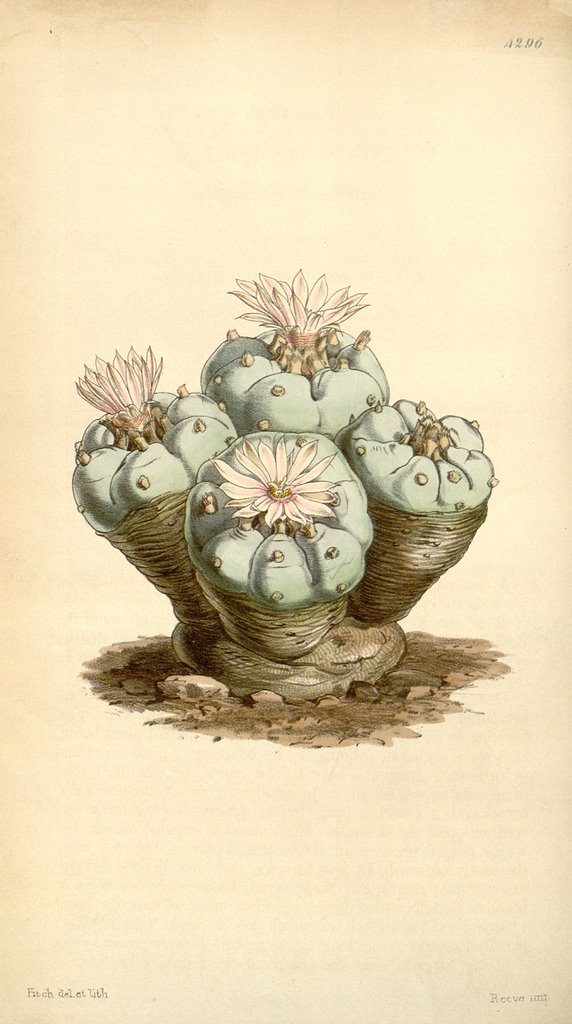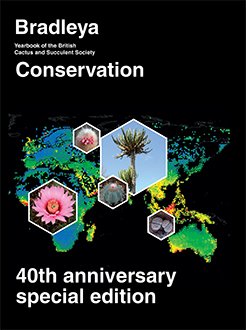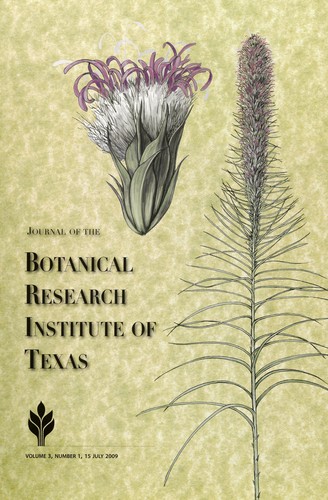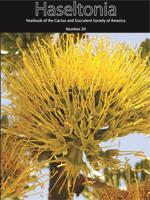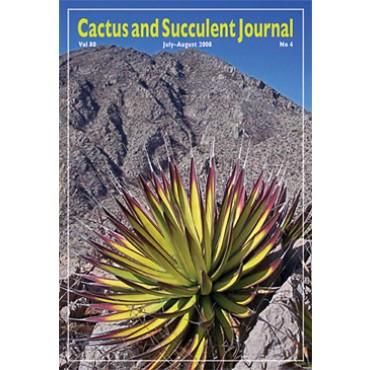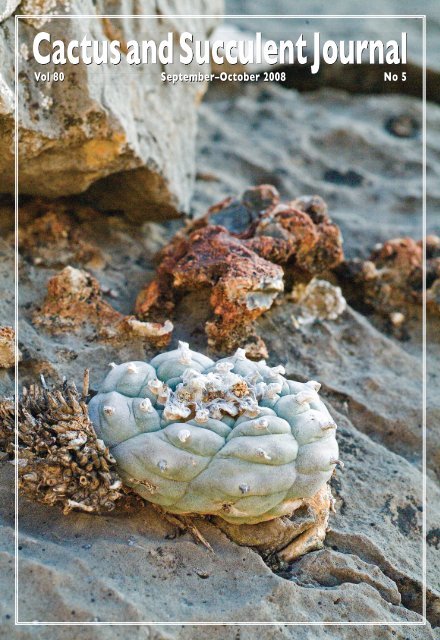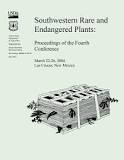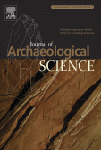The genus Lophophora
There is some controversy about how many species there are in the genus Lophophora. There are at least four that are accepted as separate, and more considered subspecies. Genetic studies are needed to answer this question.
The four accepted species are:
- Lophophora williamsii (Lem.) J.M.Coult.
- Lophophora diffusa (Croizat) Bravo
- Lophophora fricii Haberm.
- Lophophora alberto-vojtechii Bohata, Mysák & Snicer
Compare flowers of different species (or subspecies) of Lophophora
Some of the images below were all generously shared with us by V. Habermann.

Vlastimil Habermann with Lophophora.
In 1975, Vlastimil Habermann described two Lophophora species: L. fricii which is still recognized and L. jourdaniana. The latter is generally considered a cultivar as a wild population has not been located.
Compare and explore different species/subspecies/cultivars of the genus Lophophora.
Diffusa Fricii williamsii Koehresii alberto-vojtechii jourdaniana echinata pentagona cristata caespitosa variegata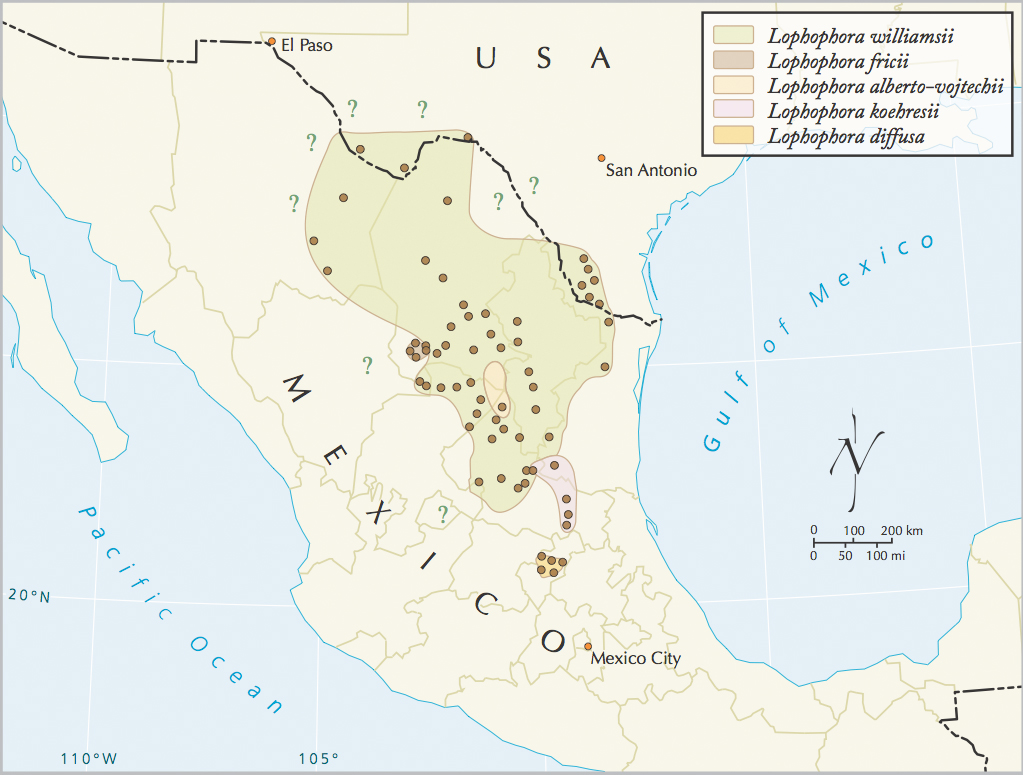
Species distribution map for the genus Lophophora
Source: Terry et al., 2008

